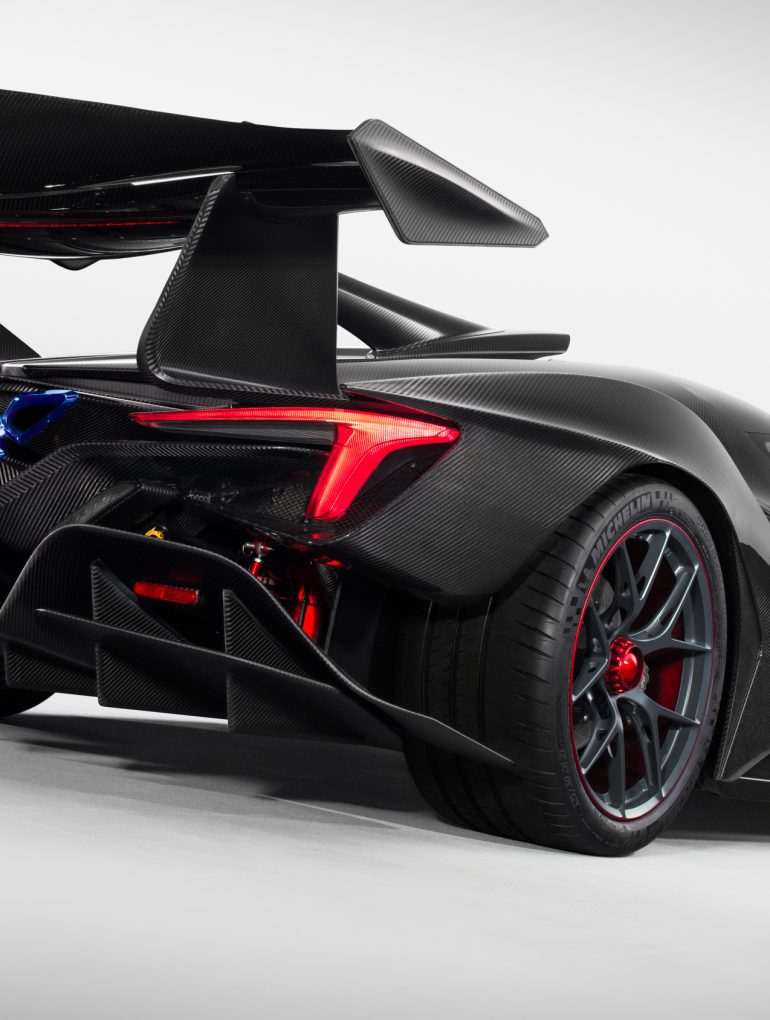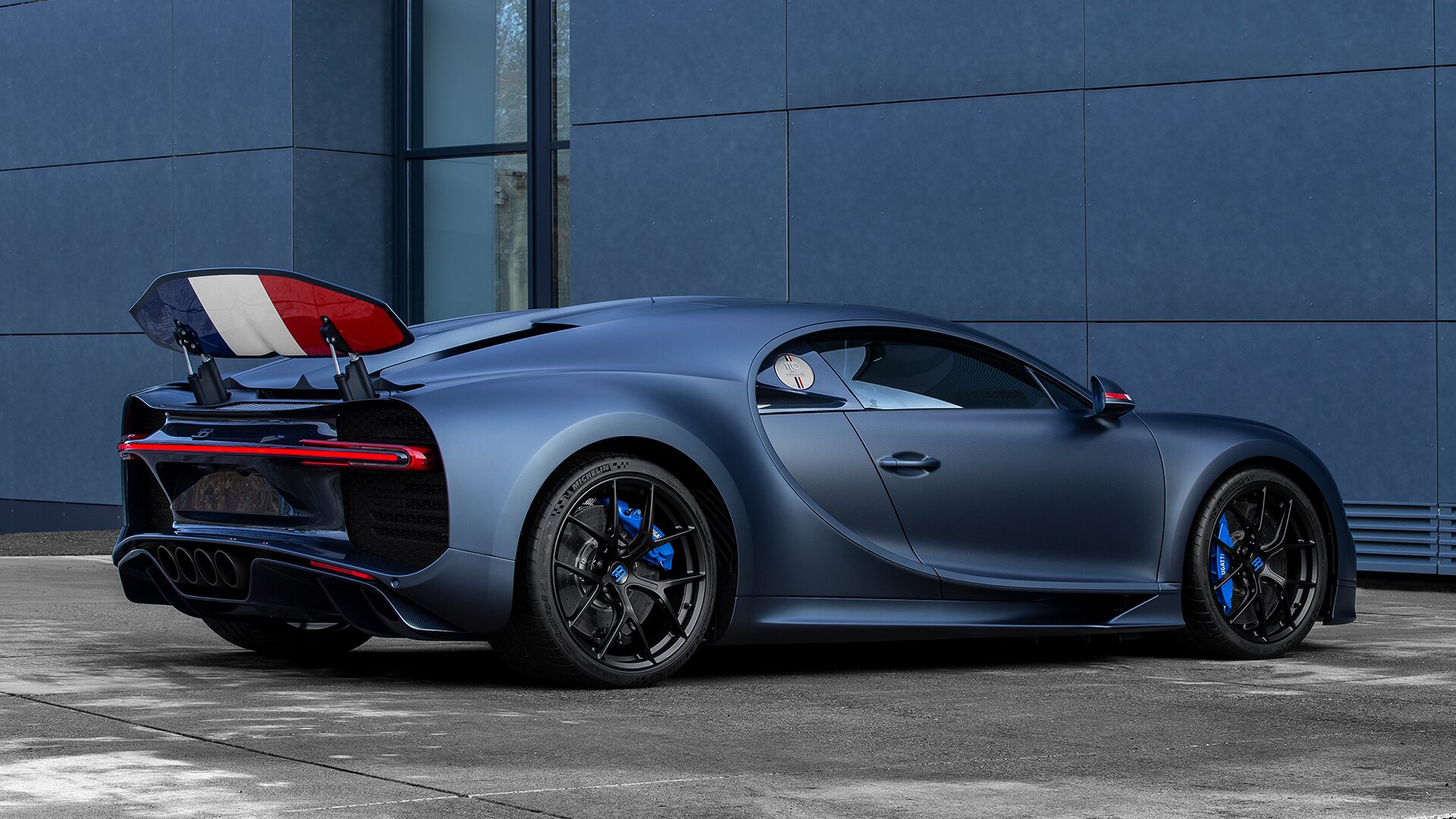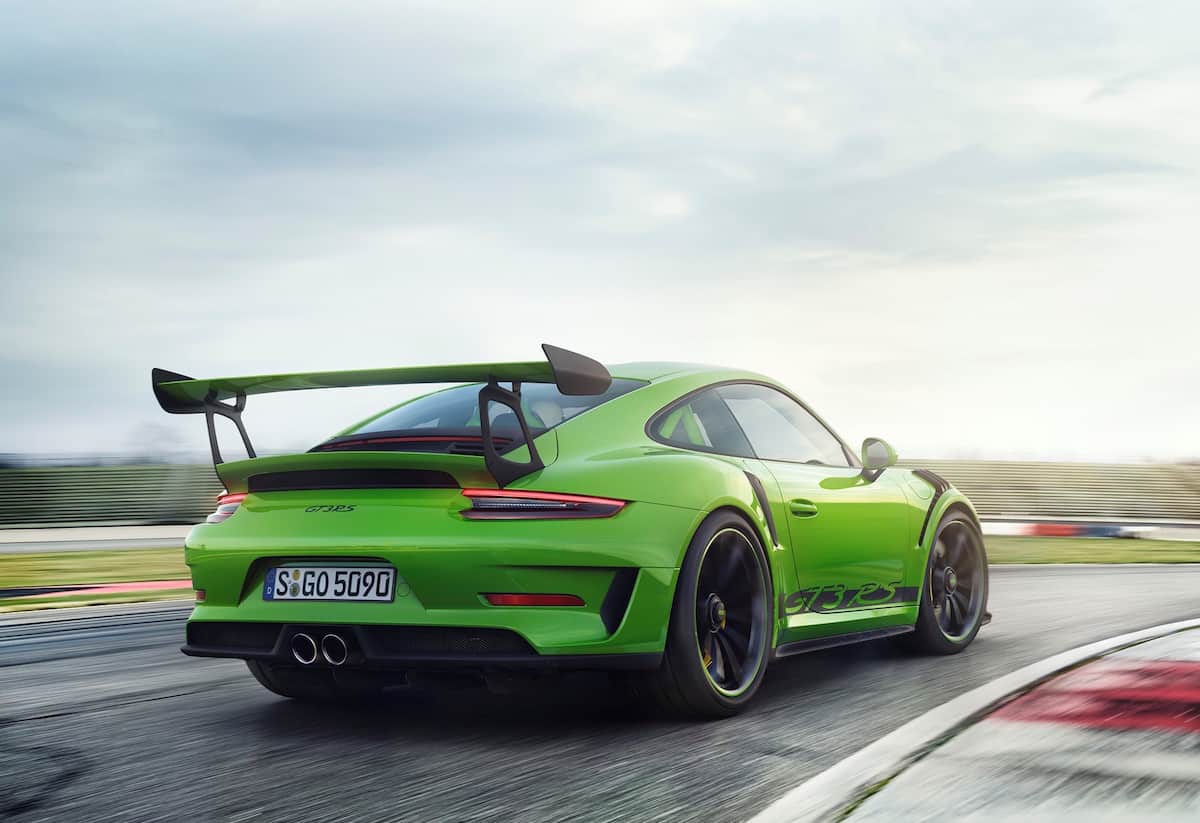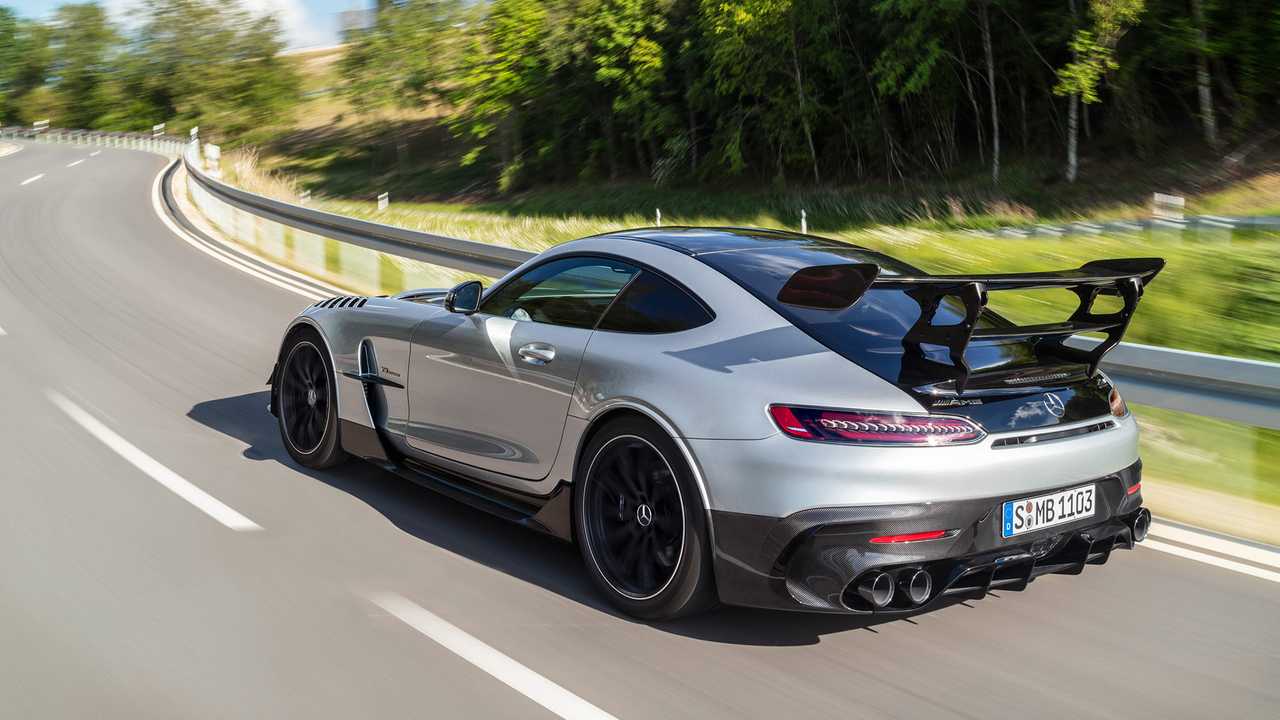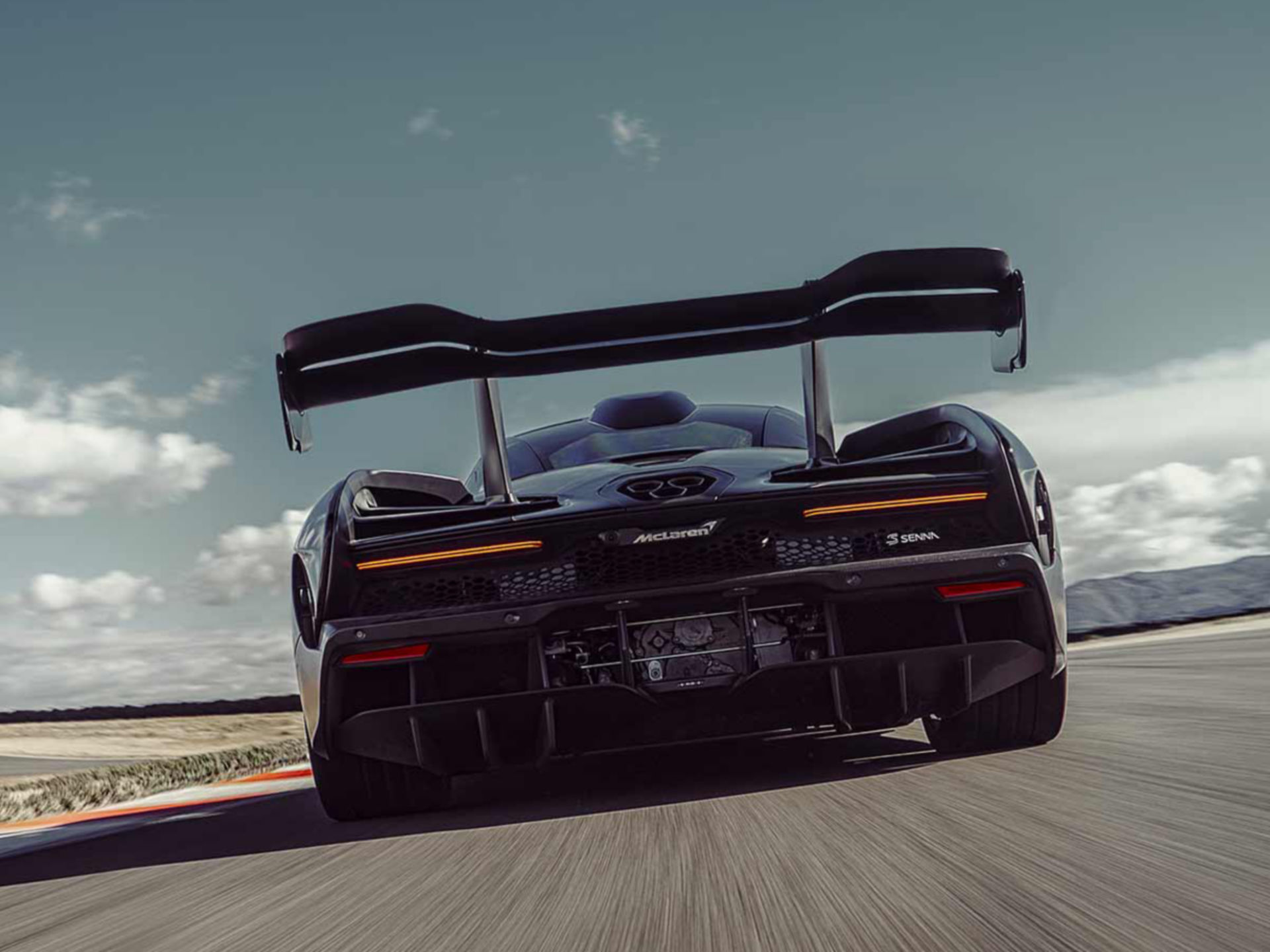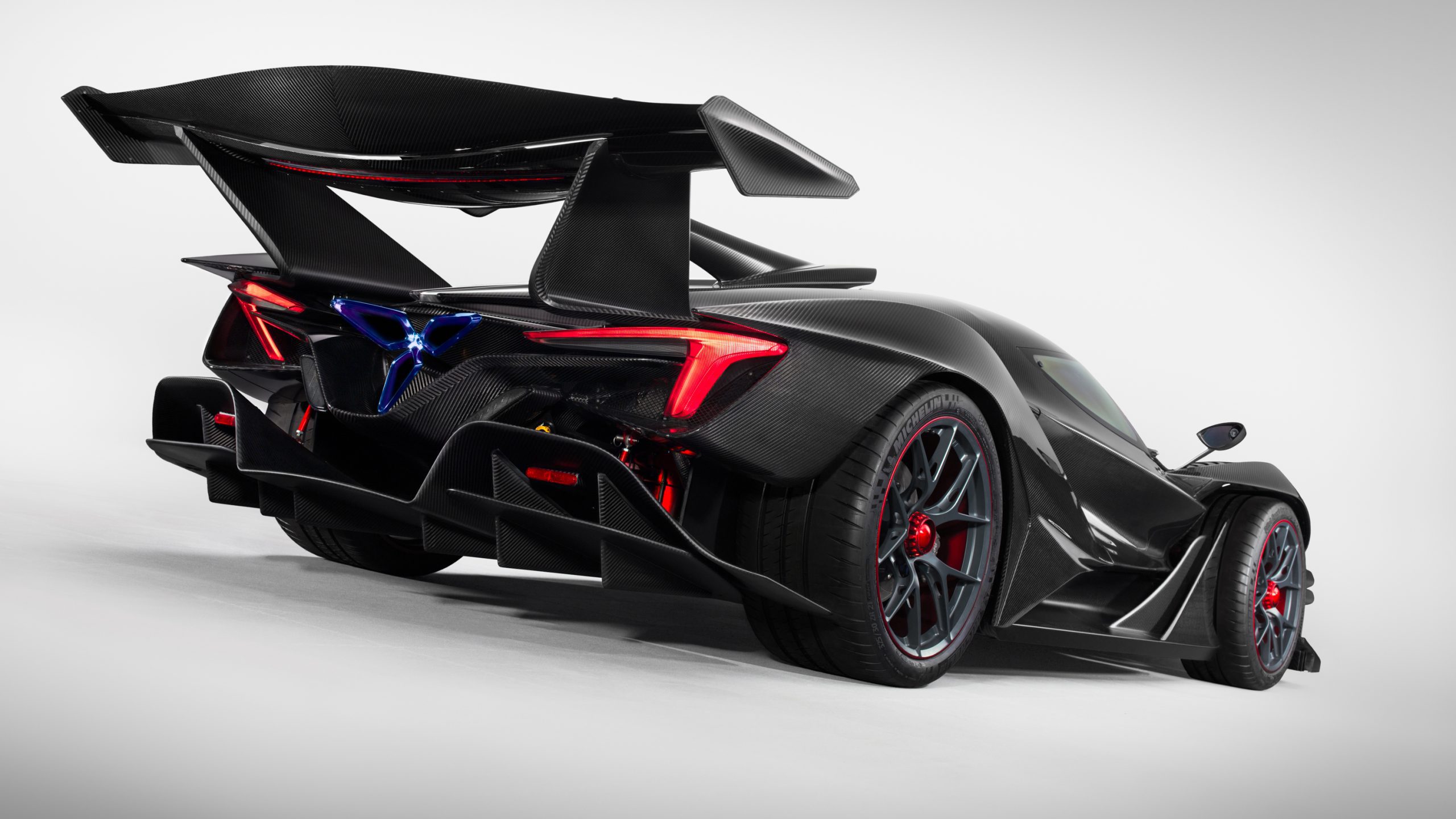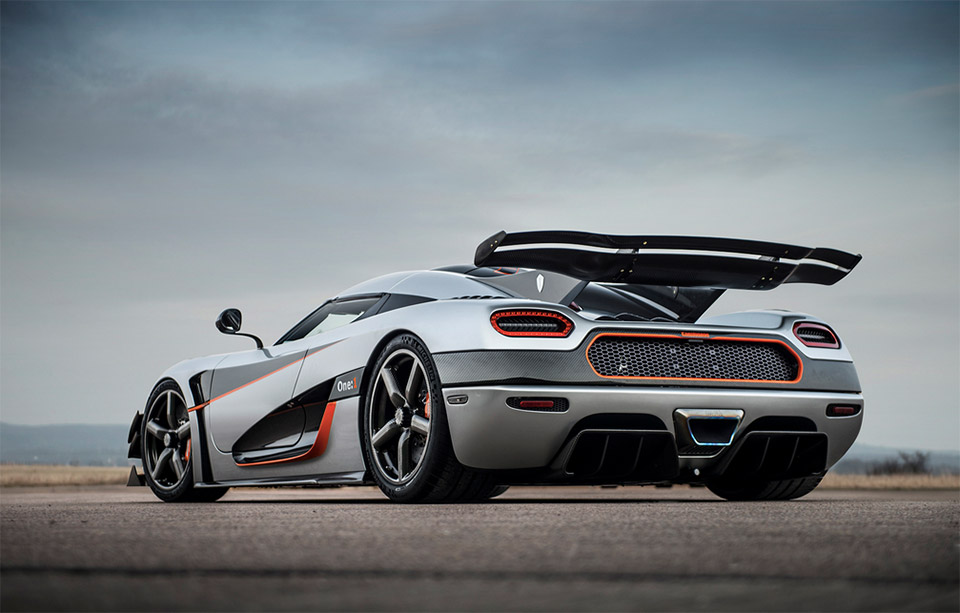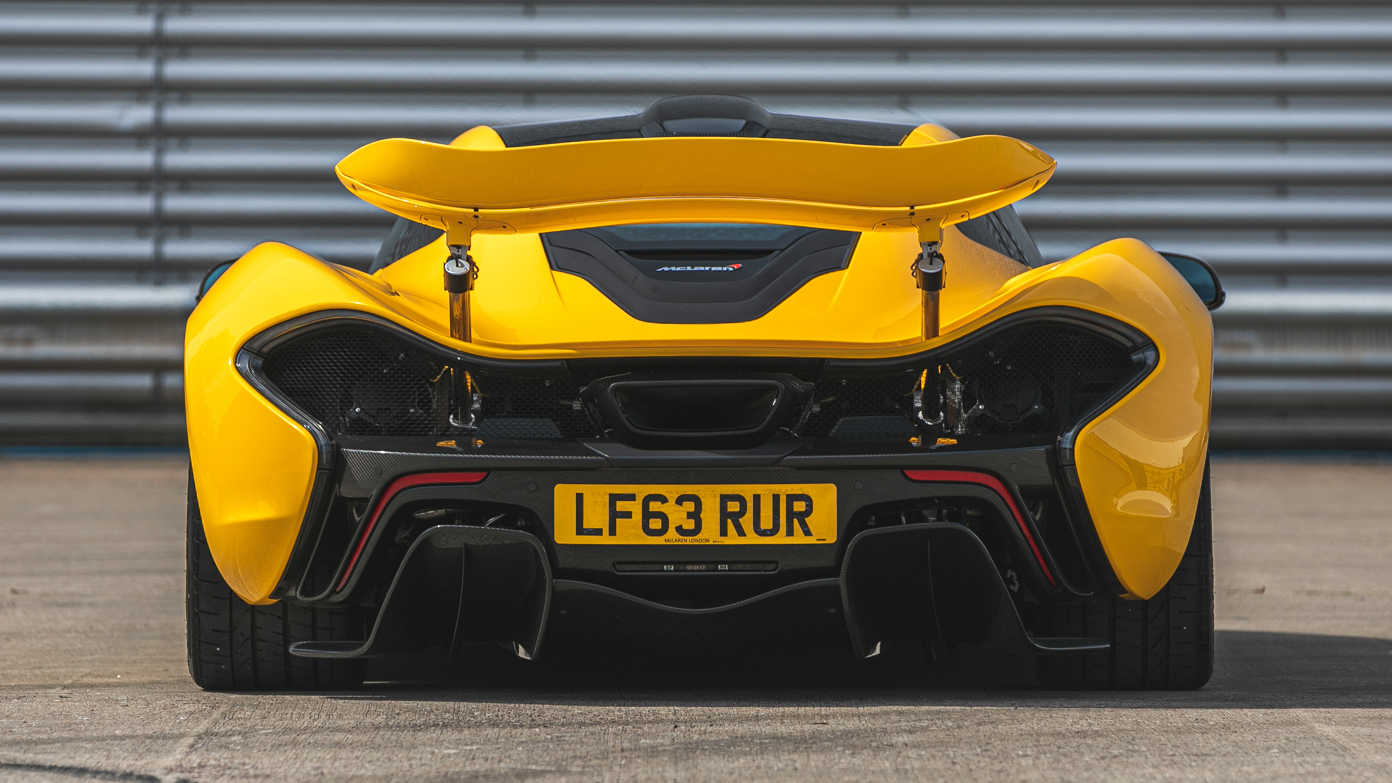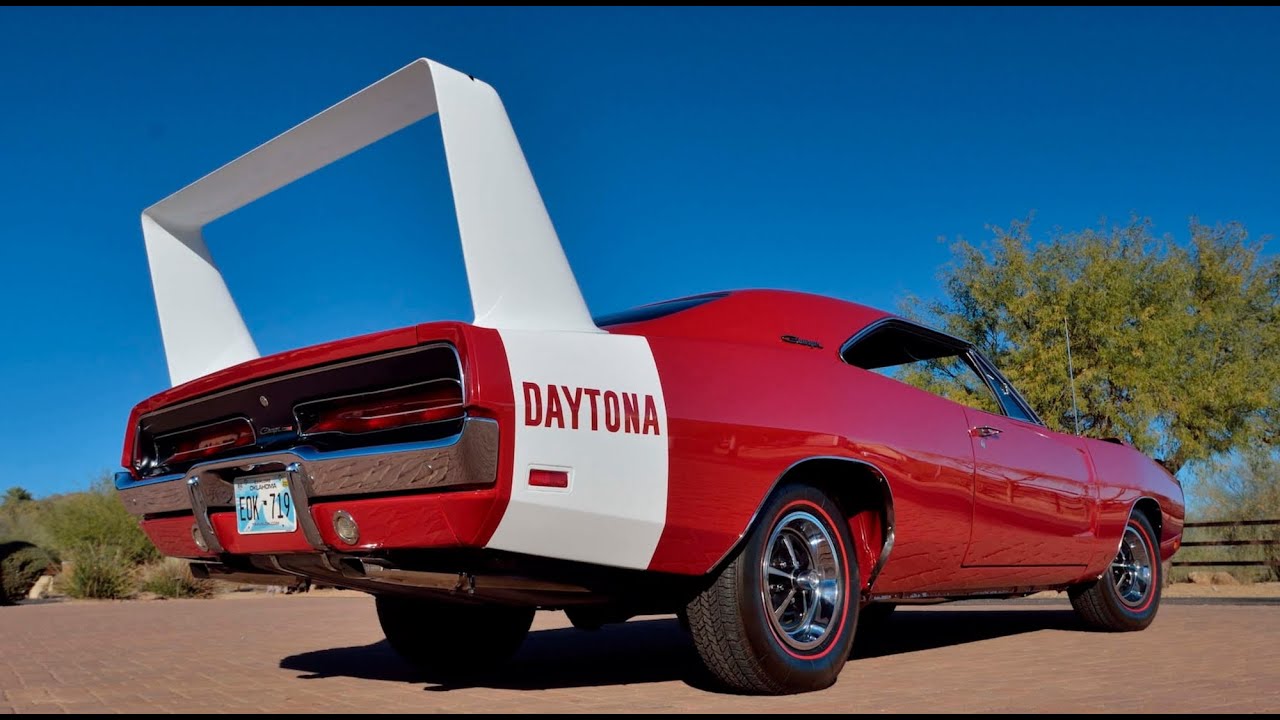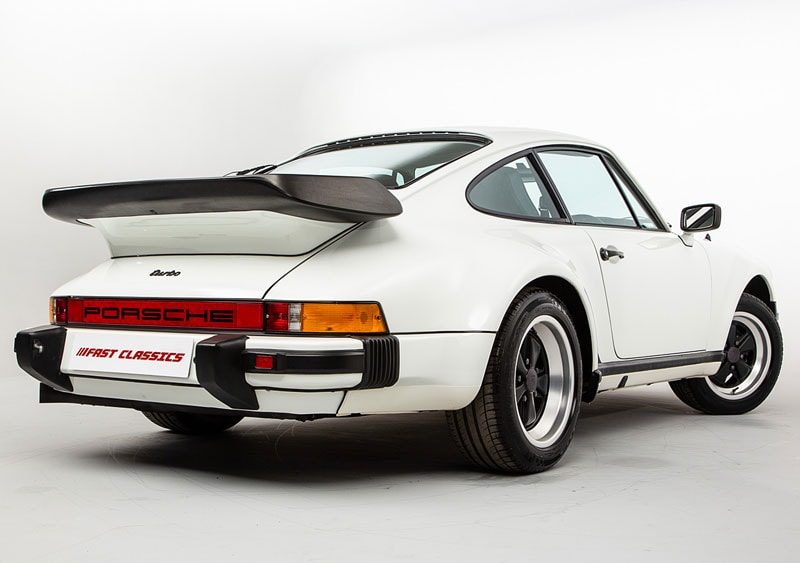There is an important reason why performance carmakers will often stick a wing, also known as a spoiler, to the rear of their automobiles. That reason is simply called downforce. As the name implies, it pushes down on the vehicle and keeps it planted on the road as it’s being driven at the very edge of performance limits.
The function in principle is very similar to an airplane wing—only this time, it’s in reverse. The air coming over the car flows beneath the wing, creating lower pressure underneath to force the car down (downforce).
For some automobile manufacturers, the wing adds to the overall aesthetics of the vehicle. Others care less about beauty and instead opt for the largest available wing that offers maximum benefits without too much compromise in overall performance.
Here, you will see some of the biggest wings ever fitted to sports cars, straight from the factory. You can decide whether each one serves the dual purpose of aesthetics and performance or if it’s purely a case of function over form.
#10: Bugatti Chiron Sport
The imperious Chiron Sport followed in the path of the Veyron Super Sport when it debuted in 2018 at the Geneva Auto Show. Here was another car capable of mind-numbing acceleration as it powered on to an electronically-restricted 261 mph top speed.
An impressive feat, no doubt, but another striking feature was how quickly it could scrub off all that forward momentum. The Chiron Sport needs less than 10 seconds and just 491 metres to come to a complete stop from 249 mph!
To achieve this, the 2.2-ton hypercar relies on powerful carbon-ceramic brakes and what has to be one of the largest stock rear spoilers out there today. That massive wing can generate almost 2,000 lbs of downforce when fully deployed. In addition to this crucial function, there’s no doubt the wing, especially in a raised position, gives the Chiron a cool stance, adding to its overall appeal.
#9: 2019 Porsche 911 GT3 RS
The ‘RS’ badge on any Porsche sports car automatically implies that its natural habitat remains the race track while still remaining road-legal. This seventh-generation 911 GT3 RS is no different and was designed with a singular purpose: maximum performance.
Porsche approached this task with brutal efficiency, and at the time of the car’s debut, it was the most powerful naturally-aspirated Porsche ever made, with a 520-hp power output. That is enough to supply all the oomph this car needs—just like that huge rear wing, designed to help the car with downforce as it whips around corners or hurtles down straights.
The wing, made from carbon fibre, can also be manually adjusted to a ‘performance position,’ creating 40% more downforce than the previous generation 911 GT3 RS. When it’s not called upon to do its thing on the track, that wing is actually large enough to double as a very effective snack table between runs.
#8: Mercedes Benz AMG GT Black Series
As far as performance is concerned, this is AMG’s ‘top dog,’ at least until the arrival of the hotly anticipated AMG One. Everything about the AMG GT Black Series is designed to convey this impression, from its eye-watering $325,000 sticker price to the formidable 720-hp twin-turbo V8 tucked under the hood and the unique twin rear-wing setup.
The setup is not only manually adjustable, but the upper blade has an active aero element that tilts by as much as 20 degrees depending on the driving mode. Altogether, that wing produces as much as 880 lbs of downforce at 155 mph, helping the car stay planted on the road as the driver flirts with its redline.
#7: McLaren Senna
Let’s face it. The McLaren Senna is a pretty ugly supercar, but then again, McLaren did not design the car so we could all fawn over sleek lines and nice angles. No. The focus was on raw performance, and McLaren prioritized this over all else (except maybe if you consider their curious decision to add see-through doors).
The McLaren Senna pushes the boundaries of what a track-focused performance machine should be and manages to do so while remaining road-legal at the same time. A key reason the car handles so well is that humongous wing that almost looks like an afterthought, hanging over the rear end.
That wing changes pitch and helps the car increase downforce, trim drag, or act as an air brake when needed. The dynamics of the wing impressed Top Gear journalists so much they declared it the ‘Wing of the Year’ for 2018.
#6: 2017 Dodge Viper ACR
‘ACR’ stands for American Club Racing and is indicative of the purpose behind the design of this all-American race car. The 2017 Dodge Viper ACR was the last hoorah for the legendary sports car, and what a send forth it was!
This vehicle boasted custom tires, race-tuned suspension and a massive 8.4-litre V10 that generated 645-hp and 600 lb-ft of torque. Then there was an Extreme Aero Package that delivered almost 1 ton of peak downforce at top speed.
The most prominent part of that package is the massive adjustable dual-element carbon fibre rear wing. As you can see from the image above, the wing can also double up as a camp bed should you, for some reason, opt to spend the night in the open with your Dodge Viper ACR.
#5: Apollo Intensa Emozione
It’s hard to argue against the fact that the Apollo Intensa Emozione (Apollo IE) is one of the most extreme modern cars ever built. Intensa Emozione is Italian for ‘Intense Emotion.’ As the name implies, it is designed to invoke powerful feelings in you as the driver, passenger or just some passer-by gawking at that uber-aggressive profile.
You will immediately notice that gigantic top-mounted wing. Who wouldn’t? It’s not just there for ‘shock and awe,’ though. According to Apollo, it can generate a scarcely believable 2,976 lbs of downforce at 186 mph. That means the 2,755-lb hypercar can theoretically drive upside down, and if that ever happens in the real world, you can be sure that wing will have a primary role to play.
#4: Koenigsegg One:1
The Koenigsegg One:1 is a special car indeed, one that offers up approximately one horsepower for every kilogram of the car’s weight (hence the name One:1). What’s more? The Koenigsegg One:1 debuted with what was the world’s first top-mounted, active rear wing.
There is an entire video clip where Christian Von Koenigsegg explains just how unique the wing structure is. The wing moves through various settings as determined by the selected handling mode and throttle/brake use.
It is not your average-sized carbon fibre strip either. This wing is massive and extends well over the rear end of the car. Impressively, the entire structure weighs only 22 lbs, allowing for maximum performance with minimal compromise on the hypercar’s overall weight.
#3: McLaren P1
Have you ever seen a McLaren in race mode? The suspension lowers by 50mm, the rear spoiler rises to 11.8 inches and extends at a 29-degree angle. It reminds one of an attack dog, just straining at its leash and waiting for the ‘go!’ command.
That sweeping wing is one of the most distinguishable elements of the McLaren P1, and it makes a strong case for the fact that downforce does not have to be ugly. The wing has various automatic settings that help the hypercar produce up to 1,320 lbs of downforce. One has to see it in action to truly appreciate how impressive the setup is.
#2: 1969 Dodge Charger Daytona
The ‘69 Charger Daytona was one half of the famous Chrysler ‘Wing Cars’; the other half was the 1970 Plymouth Superbird. This car had the most prominent stock wing fitted on any vehicle during that period. Even today, the Charger Daytona has only a few rivals when it comes to that towering structure over the trunk.
The wing was the idea of a certain John Pointer, a rocket scientist who Chrysler later recruited. He was tasked with making the Charger go faster on the racing circuit, and the wing was one of his innovative ideas. It worked too. In 1970, the Dodge Charger Daytona became the first NASCAR racecar to break the 200 mph barrier.
#1: Porsche 911 (930 Turbo) ‘Whale Tail’
This ‘70s sports car is widely regarded as the first Porsche 911 Turbo and was one of the fastest production cars at the time, with a top speed of about 162 mph. The bemusing ‘Whale Tail’ nomenclature directly references the car’s flared rear stance and a huge spoiler that gave the car its distinctive look.
Like all modern performance cars, that wing directed airflow over the car. In addition, its position, directly above the engine bay, also meant that it vented air into the engine, ultimately improving its performance. The ‘Whale Tail’ spoiler was also known as ‘Tea Tray’ at some point in the life of the turbocharged sports car.


